TRACTORY OF A CIRCLE
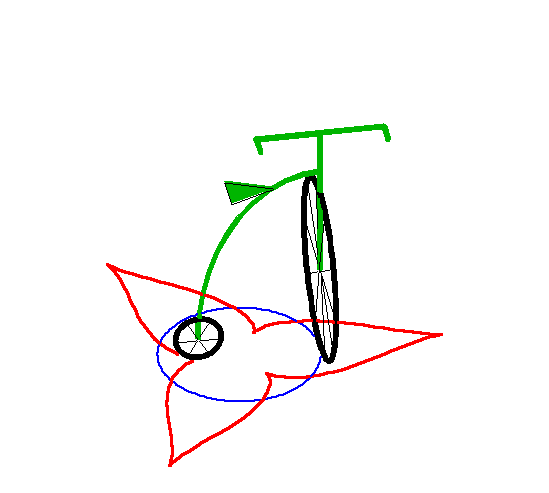

| next curve | previous curve | 2D curves | 3D curves | surfaces | fractals | polyhedra |
TRACTORY OF A CIRCLE


| Curve studied by Bordoni in 1820.
Other name: tractrix of a circle. Cycling animations by Alain Esculier, see more on his website. See gomez texeira II p 94 , loria 2d p. 220 and loria 3d p. 82 |
| Cartesian differential equation: Polar differential equation: Polar equation: - Case 0 < a < R (leash smaller than the radius): Inside branch: Outside branch: - Case a > R (leash larger than the radius): |
See the definition at tractory.
When the length of the "leash" is equal to the radius
of the circle, we get the tractrix
spiral with asymptotic point at the centre of the circle.
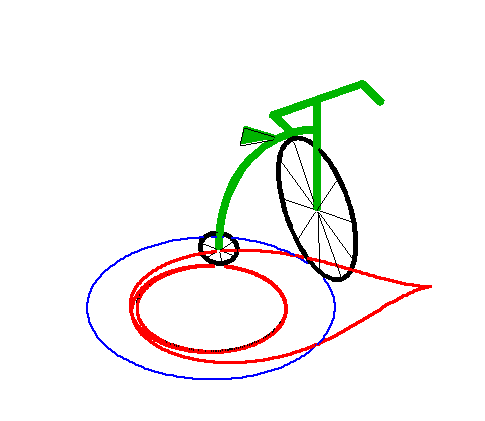 |
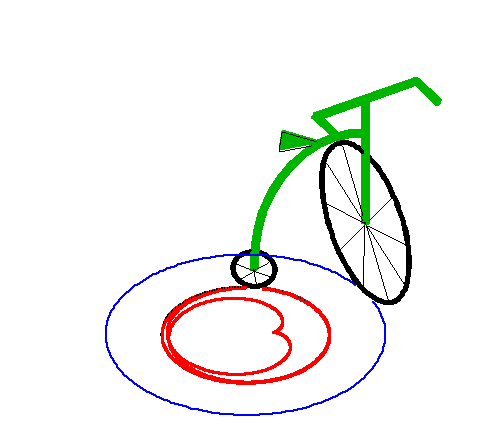 |
| When the leash a is strictly smaller than the
radius R of the circle, the curve has two branches for which the
circle with radius |
Above, the inside branch. |
| This asymptotic circle is itself a special tractory,
as illustrated on the right.
This corresponds to the case of a vehicle in motion with a fixed steering angle. |
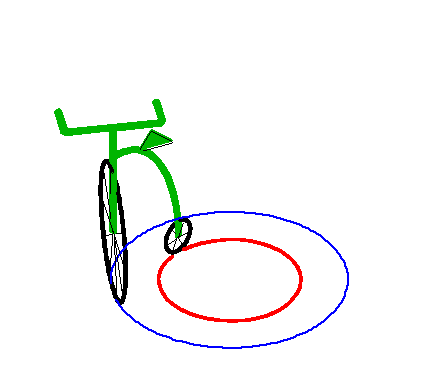 |
| When the leash is strictly greater than the radius of
the circle, we get a curve with a series of cuspidal points.
This curve is closed iff |
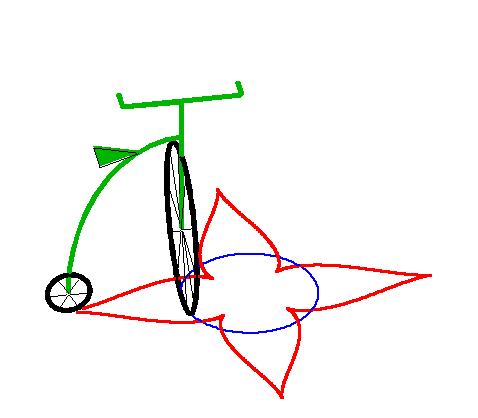 |
If a tractory of a circle slides on a fixed line at a
fixed point, then the pole of the tractory remains at constant distance
from the end of the leash and therefore describes a circle; the tractories
of circles are therefore a solution to the problem of the circular glissette
(see a figure in the case of the tractrix
spiral).
The evolutes of tractories of circles, which are polygasteroids,
therefore are solutions to the problem of the circular roulette (see Catalan
curve).
Look at www.cabri.net/abracadabri/Courbes/Tract/Tract2b.html
| next curve | previous curve | 2D curves | 3D curves | surfaces | fractals | polyhedra |
© Robert FERRÉOL 2017